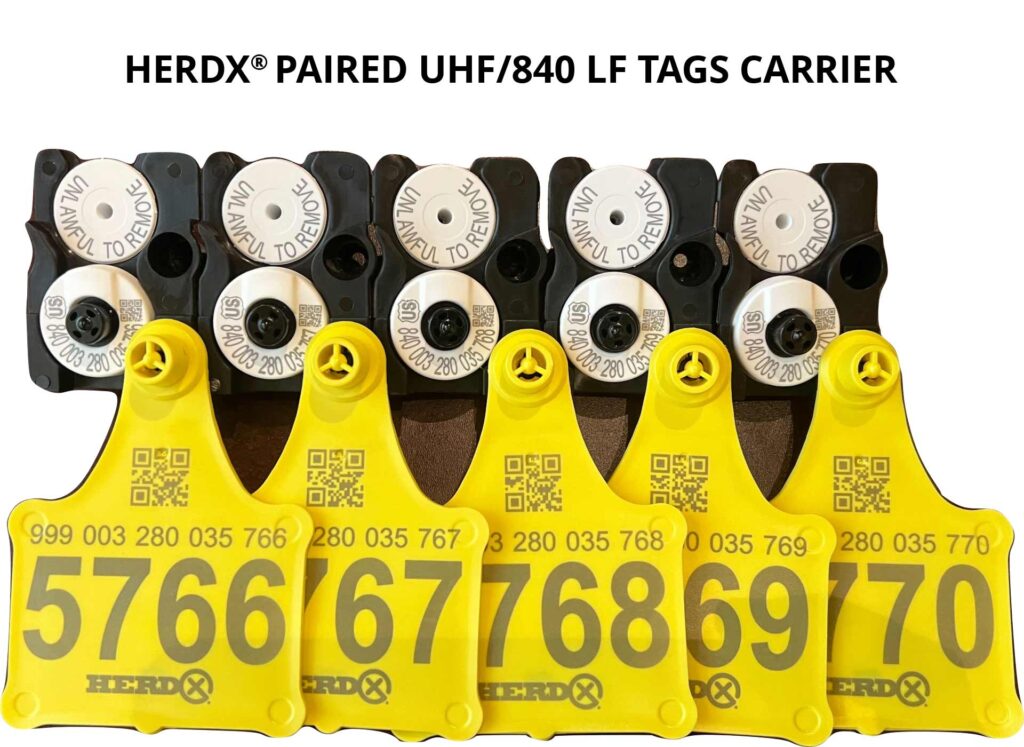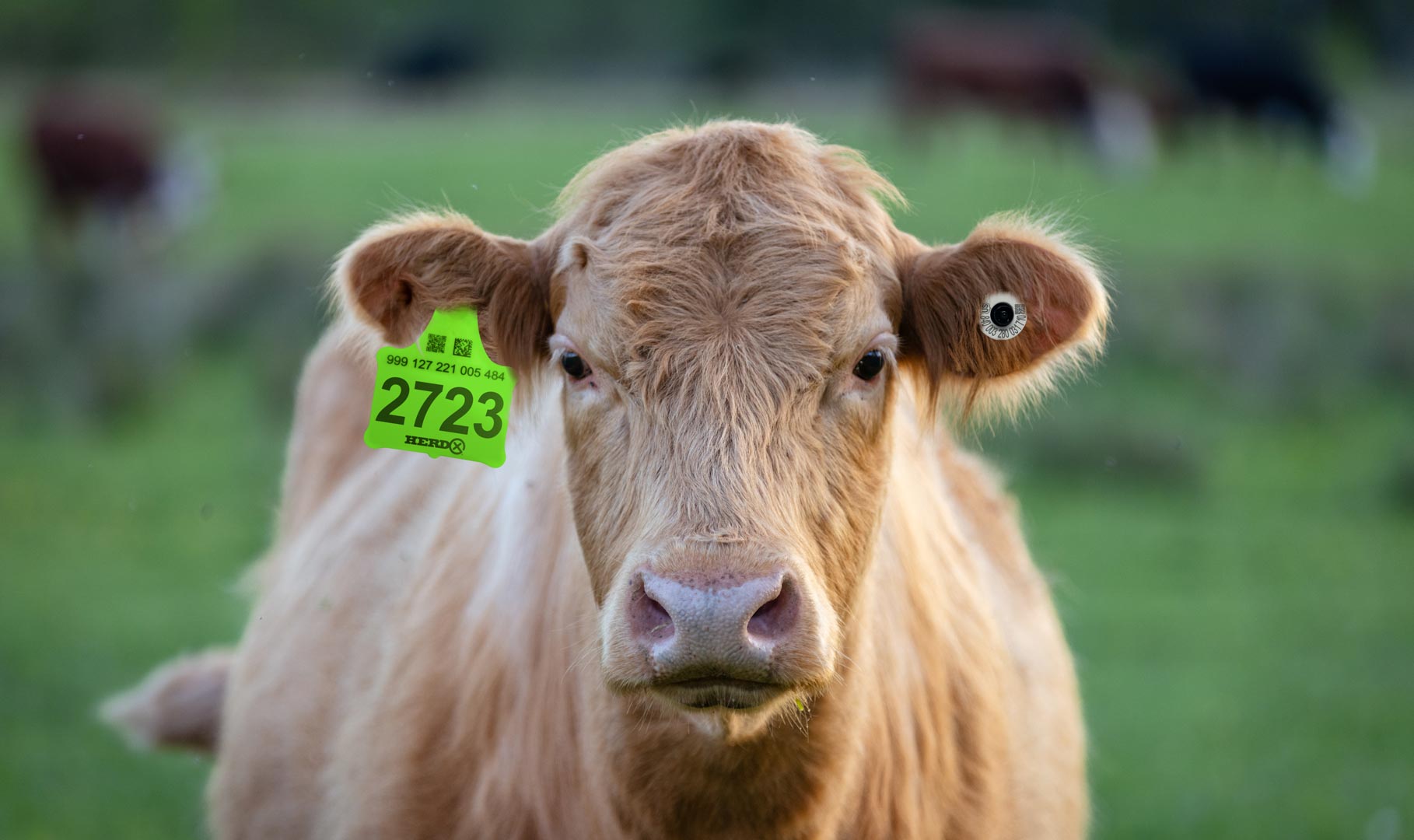The USDA’s Animal and Plant Health Inspection Service (APHIS) requires that certain cattle and bison have electronic identification (EID) ear tags when moving across state lines:
- Sexually intact cattle and bison that are at least 18 months old
- Dairy cattle
- Cattle and bison of any age that are used for rodeo, recreation, shows, or exhibitions
The new final rule switches producers to EID tags. Additionally, the new rule clarifies certain record retention and access requirements and revises some requirements applying to slaughter cattle.
The most significant benefit of the rule for farmers and ranchers is the enhanced national capability to limit the impacts of animal disease outbreaks to certain regions, the USDA said in a press release.
“Rapid traceability in a disease outbreak will not only limit how long farms are quarantined, keep more animals from getting sick, and help ranchers and farmers get back to selling their products more quickly—but will help keep our markets open,”
said Dr. Michael Watson, APHIS administrator, in a press release.
Though animal disease traceability does not prevent disease, efficient technology, tools, and processes such as EID tags can reduce the number of animals and response time involved in a disease investigation. For example, EID tags can be used to collect data about premise location of an animal during specific points in time, which can be traced quickly in an animal disease event, said Jamie Jonker, chief science officer at the National Milk Producers Federation (NMPF).
Many dairy farms have been using radio frequency identification (RFID) tags for years, incorporating their use into electronic animal management systems, which record such things as animal health events, reproduction information, and milk production data, Jonker said.
While APHIS focuses on interstate movement of livestock, states and tribal nations remain responsible for the traceability of livestock within their jurisdictions. APHIS partners with state veterinary officials each year to test their traceability systems, according to the rule.
“NMFP has supported mandatory animal identification with RFID tags for dairy cattle for more than 20 years and appreciates the steps that USDA has taken over the years to enhance animal disease traceability,” – Jonker
The USDA will continue to provide free tags to producers to jumpstart efforts to enable the fastest possible response to a foreign animal disease. Producers should check with their state veterinarian about the availability of these tags in their area.
The AVMA policy “Livestock Identification and Animal Traceability” states: “The AVMA believes that permanent, unique identification of animals and premises is essential for tracing origin and destination of all livestock, and in particular food producing animals, in order to protect the nation’s livestock industry and public health, and to enable the trace back and trace forward of animals for the purpose of animal disease control and eradication. The AVMA recommends that a high priority be placed on the development of alternatives to hot-iron branding such as the use of electronic individual animal identification and the development of an electronic system to facilitate rapid trace back of livestock in the event of a highly contagious disease outbreak.”
The EID tags must be readable both electronically and visually, and they must be tamper resistant. The tags will also need to be approved by the department and have the Official Ear tag Shield imprinted on them.
The EID rule is intended to improve the industry’s ability to trace animals in the event of a disease outbreak. This could help limit the length of quarantines, prevent more animals from getting sick, and help ranchers and farmers get back to selling their products more quickly.
How HerdX® Can Support The USDA Mandate?
HerdX® offers a new approach to this traceability standard, and is prepared to usher on a new era of herd transparency for day to day operations. With easy to read, customizable, visual, and long-lasting tags, operators can choose numbering and colors that keep their herd organized. Inserted with UHF (ultra-high frequency) RFID antenna and chip, the HerdX® tags can be read from longer distances than leading brands. The chip communicates information to the app so animals with changes to health, movement, breeding status, and many others can be updated with the touch of a button. With a handheld reader as well as the HerdView® Smart Reader, owners and managers can move between gates, pens, pastures, and chutes to capture tag scans with easy plug and play. Using 24/7 monitoring that withstands rugged environments, users can track movement to water and highlight potentially sick animals before pen riders. With efficient data capturing functions and easy export features users can observe high and low performers over time for a better bottom line.
With our new 840 UHF combo tag, producers can comply with the approaching USDA standards and still receive the benefits of RFID technology even before the event of an outbreak. With this all-in-one solution for seamless inventory management, users can get rid of cumbersome paperwork and enter a new era of herd management and meet USDA standards.


